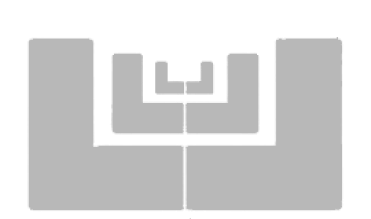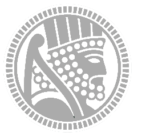Line 1: Mini Spiral
Line Speed:1-1.7 m/min
Thickness:5-10mm
Output Diameter:16-32 inch
Length: 6-18 m
Spiral Pipes
Standards:
AWWA-C200 , ASTM A53 , DINFeatures of the production line:
Line 2: Mini Spiral
Line Speed: 1-1.7 m/min
Thickness:5-10mm
Output Diameter:16-32 inch
Length:6-18 m
Line 3: Spiral
Line Speed: 0.4-4 m/min
Thickness:6-25mm
Output Diameter:16-64 inch
Length: 6-18 m
Line 4: Spiral
Line Speed:0.4-4 m/min
Thickness:7-14mm
Output Diameter:16-32 inch
Length: 6-18 m
Line 5: Spiral
Line Speed:0.5-3 m/min
Thickness:6-25mm
Output Diameter:16-120 inch
Length: 6-18 m
Linear Mass Table
| Linear Mass(kg/m) | ||||||||||||||||
| OD (inch) | OD (mm) | Thickness(mm) | ||||||||||||||
| 4.5 | 5.5 | 6.3 | 7.9 | 9.5 | 11.1 | 12.7 | 14.3 | 16 | 17 | 19 | 21 | 22.2 | 23.8 | 25 | ||
| 16 | 406 | 45 | 54 | 62 | ||||||||||||
| 18 | 457 | 50 | 61 | 70 | ||||||||||||
| 20 | 508 | 56 | 68 | 78 | ||||||||||||
| 22 | 558.8 | 61 | 75 | 86 | ||||||||||||
| 24 | 609.6 | 67 | 82 | 94 | 117 | 141 | 164 | 187 | ||||||||
| 26 | 660.4 | 73 | 89 | 102 | 127 | 152 | 178 | 202 | ||||||||
| 28 | 711.2 | 78 | 96 | 109 | 137 | 164 | 197 | 219 | ||||||||
| 30 | 762 | 84 | 103 | 117 | 147 | 176 | 205 | 235 | ||||||||
| 32 | 812.6 | 90 | 109 | 125 | 157 | 188 | 219 | 250 | ||||||||
| 34 | 863.8 | 95 | 116 | 133 | 167 | 200 | 233 | 266 | ||||||||
| 36 | 914.4 | 101 | 123 | 141 | 177 | 212 | 247 | 282 | ||||||||
| 39 | 990.6 | 109 | 134 | 153 | 191 | 230 | 268 | 306 | ||||||||
| 40 | 1016 | 112 | 137 | 157 | 196 | 236 | 275 | 314 | ||||||||
| 42 | 1066.8 | 118 | 144 | 165 | 206 | 248 | 289 | 330 | ||||||||
| 45 | 1143 | 177 | 221 | 265 | 310 | 354 | 398 | 445 | 486 | 527 | ||||||
| 48 | 1219.2 | 188 | 236 | 283 | 331 | 378 | 425 | 475 | 519 | 562 | ||||||
| 51 | 1295.4 | 200 | 251 | 301 | 351 | 402 | 452 | 505 | 551 | 598 | ||||||
| 54 | 1371.6 | 212 | 266 | 319 | 372 | 426 | 479 | 535 | 584 | 634 | ||||||
| 57 | 1447.6 | 224 | 280 | 337 | 393 | 449 | 505 | 565 | 617 | 669 | ||||||
| 60 | 1524 | 236 | 295 | 355 | 414 | 473 | 532 | 595 | 650 | 705 | ||||||
| 63 | 1600.2 | 310 | 373 | 435 | 497 | 559 | 625 | 683 | 741 | 818 | 864 | 925 | 971.1 | |||
| 66 | 1676.4 | 325 | 390 | 456 | 521 | 586 | 655 | 716 | 777 | 857 | 906 | 970 | 1018 | |||
| 69 | 1752.6 | 340 | 408 | 477 | 545 | 613 | 685 | 749 | 812 | 897 | 947 | 1015 | 1065 | |||
| 72 | 1828.8 | 355 | 426 | 498 | 596 | 640 | 715 | 782 | 848 | 936 | 989 | 1059 | 1112 | |||
| 75 | 1905 | 370 | 444 | 518 | 593 | 667 | 745 | 815 | 884 | 976 | 1031 | 1104 | 1159 | |||
| 78 | 1981.2 | 384 | 462 | 539 | 616 | 694 | 775 | 847 | 919 | 1015 | 1073 | 1149 | 1206 | |||
| 81 | 2057.4 | 399 | 480 | 560 | 640 | 720 | 805 | 880 | 955 | 1055 | 1114 | 1194 | 1253 | |||
| 84 | 2133.6 | 414 | 498 | 581 | 664 | 747 | 835 | 913 | 991 | 1094 | 1156 | 1238 | 1300 | |||
| 87 | 2209.8 | 429 | 515 | 602 | 688 | 774 | 866 | 946 | 1027 | 1134 | 1198 | 1283 | 1347 | |||
| 90 | 2286 | 444 | 533 | 623 | 712 | 801 | 898 | 979 | 1062 | 1173 | 1239 | 1328 | 1394 | |||
| 96 | 2438.4 | 473 | 569 | 664 | 760 | 855 | 956 | 1045 | 1134 | 1252 | 1325 | 1417 | 1488 | |||
| 102 | 2590.8 | 503 | 605 | 706 | 807 | 909 | 1016 | 1111 | 1205 | 1331 | 1406 | 1507 | 1582 | |||
| 108 | 2743.2 | 533 | 640 | 748 | 855 | 962 | 1076 | 1176 | 1276 | 1410 | 1490 | 1596 | 1676 | |||
| 114 | 2895.6 | 563 | 676 | 790 | 903 | 1016 | 1136 | 1242 | 1348 | 1489 | 1573 | 1686 | 1771 | |||
| 120 | 3048 | 592 | 712 | 831 | 951 | 1070 | 1196 | 1308 | 1419 | 1568 | 1657 | 1775 | 1864 | |||
Advantages of Spiral Pipe
The advantages of high pressure Spiral pipe compared to traditional rectangular duct are numerous and compelling:Attractive appearance
- Exposed spiral duct is attractive and is frequently specified by architects because of its superior aesthetic appeal.
- Paintable Spiral duct can be finished to blend in with, or stand out from, the indoor environment.
Economical to install
The unique attributes of Spiral duct can reduce installation costs:
- Easier to install through and around structural framing
- Longer spans reduces installation operations and the number of connections and hangers required
- Connections are made quickly and easily, and are easier to seal.
Lower cost of ownership
Spiral duct reduces upfront and operating costs:- Low air leakage, optimal airflow characteristics, and less pressure drop allow smaller and more efficient air moving equipment
- Inherently stronger, allowing the use of lighter gauge, less costly metals
- Efficiently manufactured from strip steel to any diameter
- Spiral duct’s smooth interior traps less dust and is easier to clean
Many options and accessories
Spiral pipe provides a solution to almost any system design requirement:
Manifold ducts efficiently handle complex distribution requirements and reduce installation time and cost
Standard components for every application, such as gored and die formed elbows, tees, laterals, pant wyes, reducers, rectangular to round transitions, pick-up hoods, blast gates, cleanouts, access doors, diverters, and many more
Custom components can be engineered for any purpose or specific application
Production Process:
1. Coil entry Section:
At the beginning of production line this section leads the sheet toward the production line which includes:
- • Bringing coil to the machine
- • Coil holder
- • Sheet trimmer
Cutting and preparing the end of produced coil and beginning of new coil and welding these two edges together by the use of submerged-arc welding (SAW).
3. Flattener:
The beginning and end of coil is flattened by the use of flattening rollers
4. Cutting the edge and collecting the waste:
The edge of sheet is cut by the use of spinning discs at the edge cutting section and the waste are collected.
Navigating side pipes:
Holding and adjusting sheet at the center of spiral line
5. Angle maker of edge of sheet:
Angle making is applied to both sides of the sheet for modifying and reaching the required conditions of the sheet according to the required angle.
6. Forming:
When the coil pass through different rollers, they take the form of pipes. These rollers are adjustable for different sizes.
7. Internal and external welding section:
After taking the form of pipes, the edges are welded by the use of SAW method, and firstly their inside and then their outside are welded.
8. Ultrasonic Testing Section:
This machine is able to detect the possible flaws in seam welding area and HAZ immediately after welding; thus it is able to immediately remove the defective pipe out of the production line.
Pipes are cut by the use of plasma cutting in different lengths according to the customer’s demand.
10. Pipe numbering:
In order to increase the ability to follow the produced pipe and to have access to accurate production history of each of pipes the number of pipe is written at the end of the pipe.
Through this it is possible to determine the exact date of production and the number of mother coil.
Numbering includes the following descriptions:
- Manufacturer
- Size
- Steel thickness and grade
- Pipe number
- Year/week/day of production
11. chamfering both ends of pipe:
At this section, two ends of all produced pipes are chamfered.
12. Hydrostatic testing section:
This machine tests all produced pipes with maximum pressure of 5000PSI in hydrostatic mode. At this section, due to high liquid pressure inside the pipe, in case of any defect on the welding section or the sheet the defects apear as water leakage and pipe will be reviewed by the quality control group of the factory. This device is able to test the pipes up to 200Bar of pressure.
At this stage all pipes are checked by the quality control group of the factory and additionally two ends of the pipes are controlled regarding the angle and diameter and in case of no problem the QC lable is put on them.


